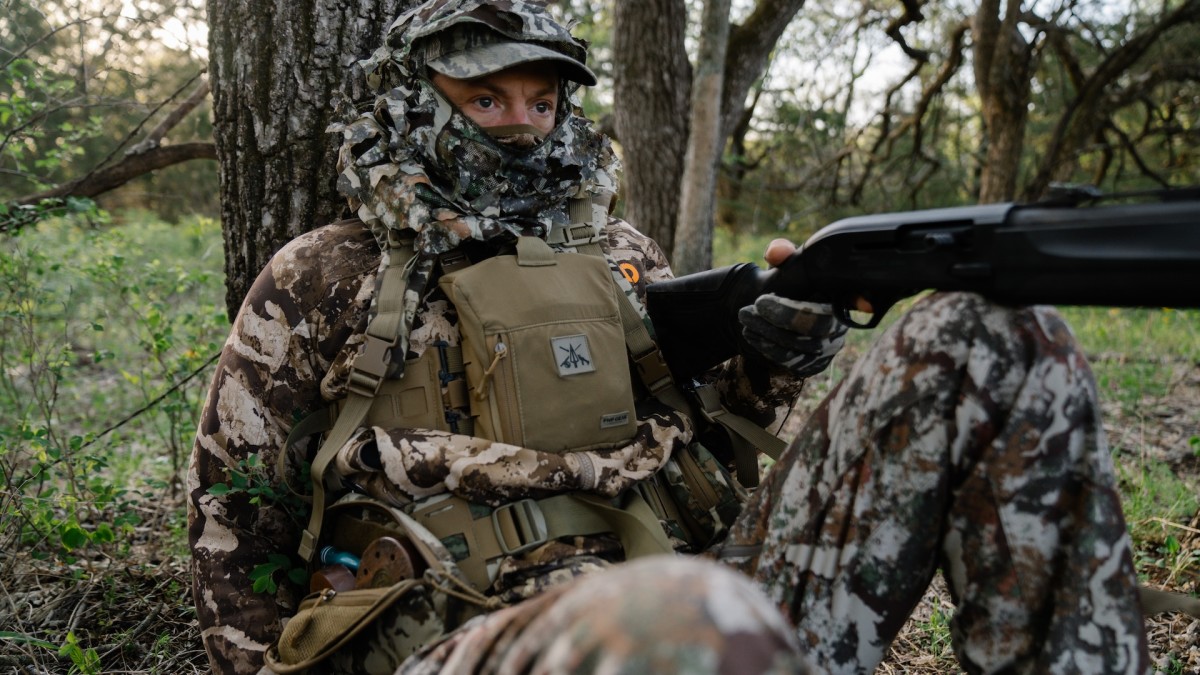
Some of us hunt family land, some of us gain permission from neighborly landowners, some of us have hunting leases, and some of us choose to hunt public land. Regardless of your circumstances, we all have the opportunity to hunt turkeys this spring, and that’s what is important.
If you’re reading this article, you’re likely gearing up to try your luck on some public land or have recently got your butt kicked and look forward to heading back for another round. Here’s what awaits you and some solutions for curveballs likely to come your way.
Someone Will Interrupt Your Hunt
This one seems like a no-brainer. After all, we’re all sharing the woods and chasing the same turkeys. But what we don’t know is when it will happen. Murphy has a way of showing up at the most inopportune time, and turkey hunting is no different.
Last spring, we had a tom fired up and gobbling his way in, seemingly on a string. All the gobbling naturally attracted the attention of two different groups of hunters. The gobbler was nearing bow range when he spotted a pursuing hunter and fled the scene. Bummer, sure. But the key is how you adapt and respond. That turkey lives to see another day, and you get to hunt another day.
These Gobblers Can Sniff Out Bad Turkey Callers
Despite the lack of externally visible ears, turkeys are equipped with a very acute sense of hearing. As explained by the crew at the Wild Turkey Lab, “When a turkey hears sound, each ear detects the sound at different volumes, independently, and sends that information to the brain. The bird is then able to process sounds in a way where they can determine direction and distance based on the different pieces of information sent. And because turkeys constantly turn their heads, even if ever so slightly, they use these head turns to nail down where sounds are coming from, and to pinpoint the source of movements around them. The take-home is, turkeys have evolved senses of vision and hearing that allow them to avoid predation and create new ways of humbling us turkey hunters every spring.”
Showing up at the local game production area with sub-par calling skills will quickly put you behind the eight ball. The turkeys living in these highly pressured hunting grounds have heard every type of turkey call known to man, including calls that aren’t going to fool anyone. You’re left with the choice to sharpen your calling skills or deploy silent tactics.
Turkeys Cling to Private Land Sanctuaries
Here’s how many public land turkey hunts will end. You’ll be driving to your favorite public land honey hole and spot a flock on the adjacent private land, within a callable distance from the public land boundary, or so you think.
The next thing you know, the better part of the morning has passed, and the flock isn’t budging from their private land sanctuary. You’ll never succeed if you don’t try, but more often than not, your time is better spent locating the public land bird that’s willing to play the game and is out looking for love.
You Won’t Call a Tom to Somewhere That he Doesn’t Want to Be
Turkeys that have been bumped by hunters tend to find an area in which they feel safe and stick to it. Few things in the turkey woods are more frustrating than a lone tom who can see your decoys, is responding to your every call, yet won’t commit. To edgy toms, something is fishy about two random birds that have been staked out in the same place all morning, especially if it’s an area the flock doesn’t frequent.
The only sure-fire way to find a flock’s comfort zone is by scouting. While preseason scouting is a great way to locate unpressured birds and learn their approximate whereabouts, after the birds have been pressured, they typically move to more discreet locations. The good news is that these new core areas likely aren’t too terribly far from where you found them during preseason scouting; a little in-season scouting will do the trick.
You’ll Have to Work Harder Than Most
It’s no secret that hunting unpressured game is as good as it gets. Relatively unpressured game can still be found on public land, but it’s likely going to take you multiple seasons to stumble upon. Here’s the good news, according to a study out of the University of Georgia, the majority of public land hunters stick close to roads and trails.
The study equipped 151 hunter outings with a GPS and tracked their patterns on a 3,500-acre wildlife management area. The study summarizes, “We found that on average, hunters spent a little more than three hours on each hunt, but most of the effort was spent during the first two weeks of the season. We also found that ~40% of all hunter locations were <25 yards from a road. The bottom line is, most hunters spent time afield early in the season, and roads were the primary driver of access as most time was spent fairly close to roads.”
Another interesting finding was that half of all hunter locations were highly concentrated, occupying 2.9% of the wildlife management area. Moreover, 27% of the property held 90% of the hunters. The bottom line is a good public land hunt can still be found. The fun is in learning to locate these under-the-radar places and enjoying the process every step of the way.





Conversation